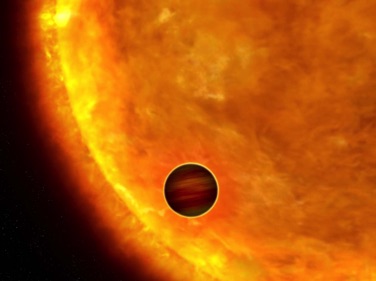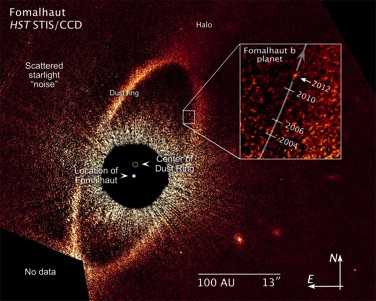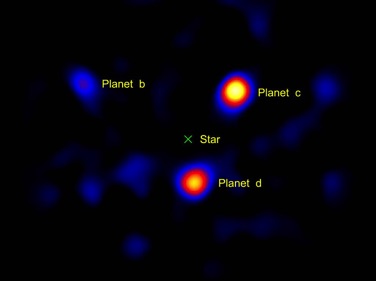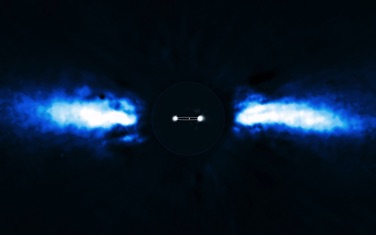The radial velocity and transit photometry methods detect exoplanets by indirect means. The direct imaging method refers to making a direct visual image of an exoplanet. The direct imaging of exoplanets is quite difficult since most exoplanets are quite dim when compared to their parent stars. Any reflected light from exoplanets is usually completely overwhelmed by glare from the central star. Despite these problems, however, a number of direct images of exoplanets have been made using visible and infrared light.
Fomalhaut b, seen in the main view panel, is unique in that it is was the first exoplanet to be imaged using visible light. Careful observations made with the Hubble space telescope have allowed astronomers to capture a photographic record of Formalhaut b at different positions in its orbit since 2004. Fomalhaut b, with a mass slightly less than twice that of Jupiter, is also unique in that it is the least massive exoplanet to have been discovered using the direct imaging method. However, it has a very unusual elliptical orbit with a 2,000 year long period.
HR 8799 (also cataloged as HIP 14189) is a main sequence star that is located 129 light-years from Earth. It is the first multi-planet solar system to have been viewed by direct imaging. Between 2008 and 2010, scientists were able to determine the existence of four exoplanets about the central star using infrared light.
A Direct Imaging First
Beta Pictoris is a star located 63.4 light-years from our Sun. It possesses an exoplanet, Beta Pictoris b, that is quite unique in the history of the direct imaging method. It is the first exoplanet that has been directly imaged as it moves in its orbit from one side of its parent star to the other side of the star.



